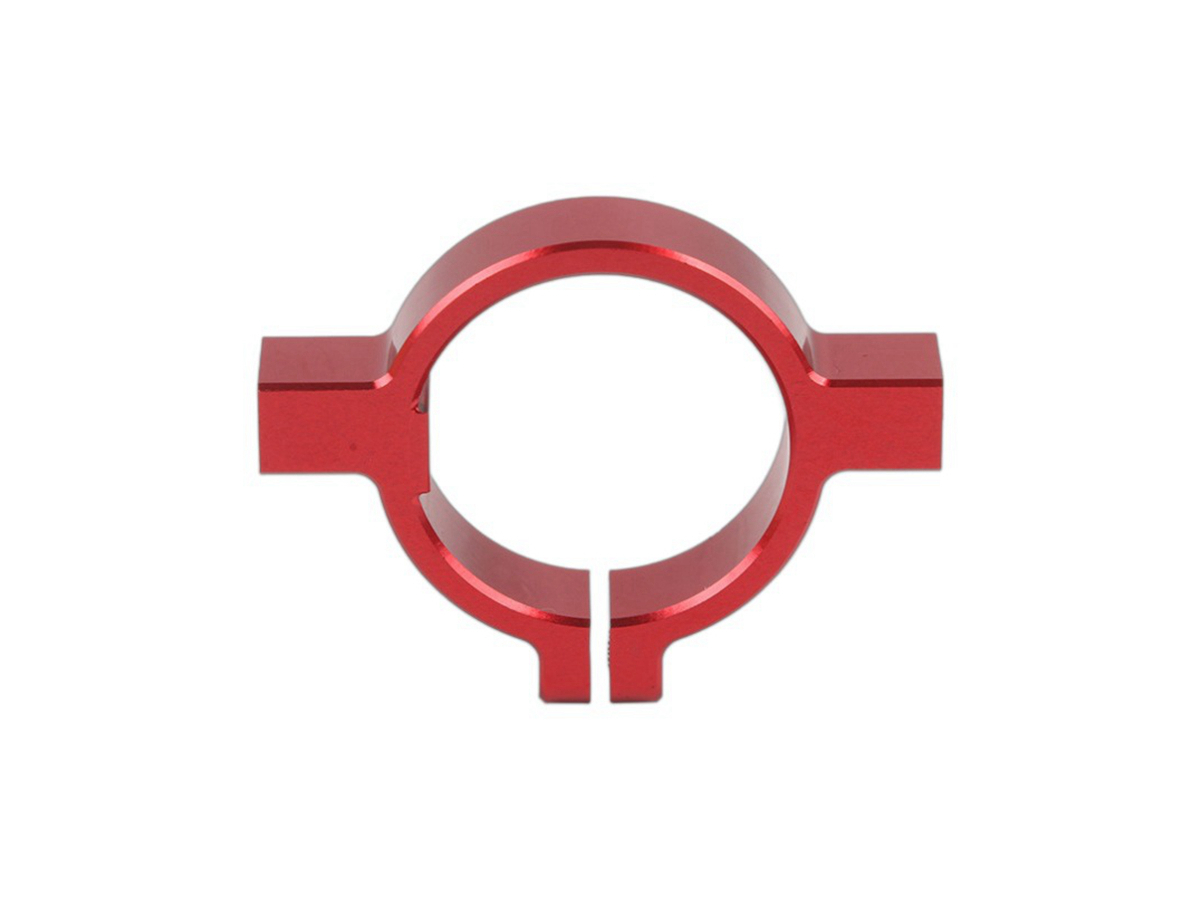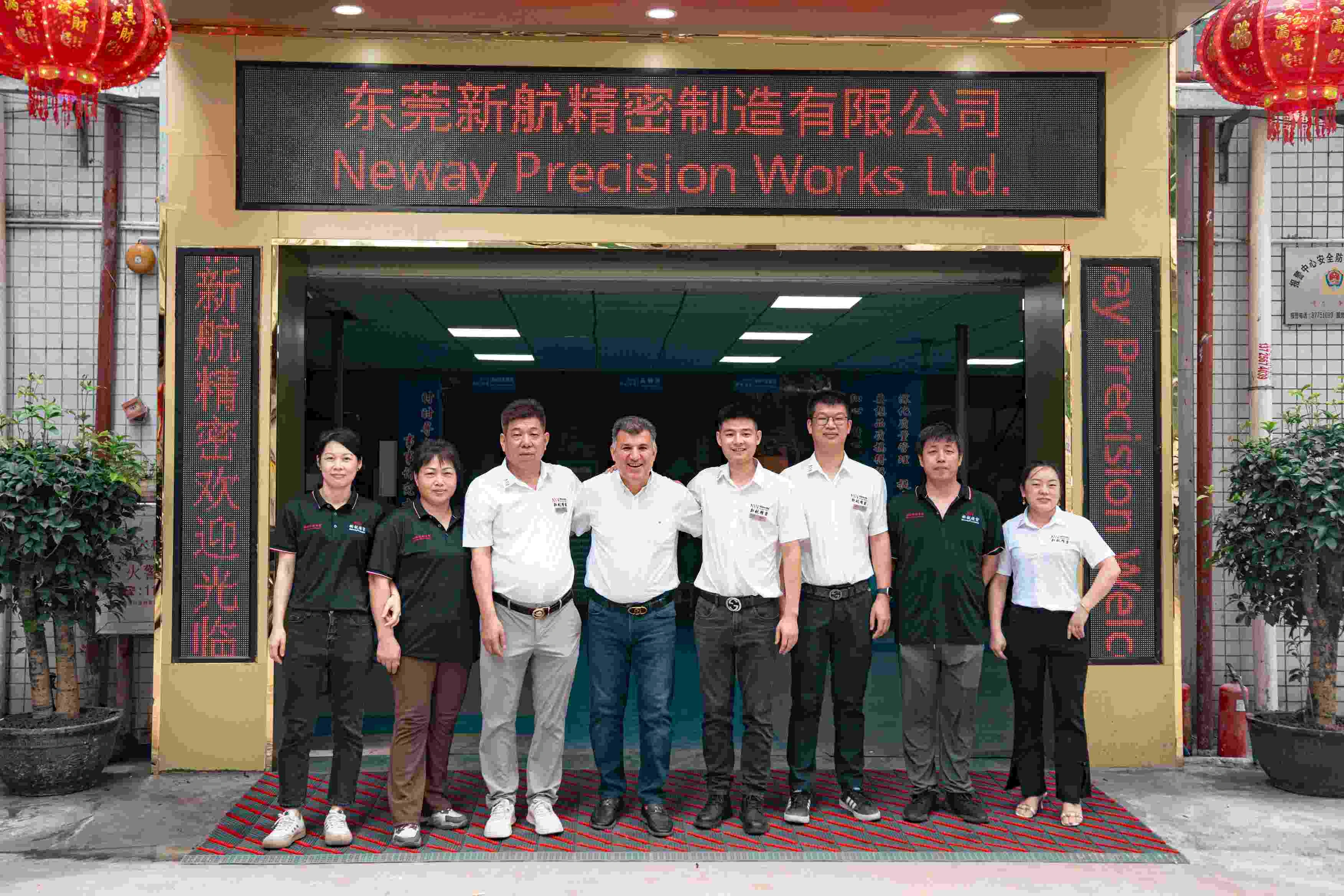From Robotics to Automation: The Role of CNC Machined Aluminum Parts in Industrial Advancements
Introduction
The rapid growth of robotics and automation industries demands components that deliver lightweight strength, precision, and reliability. Aluminum alloys, favored for their high strength-to-weight ratio, excellent machinability, and corrosion resistance, are crucial for robotic arms, automation systems, structural supports, and precision motion components.
Advanced multi-axis CNC machining facilitates the production of aluminum parts with intricate geometries, tight tolerances, and exceptional surface finishes. CNC-machined aluminum components significantly enhance robotic and automated industrial equipment's efficiency, accuracy, and durability, driving continuous innovation and operational excellence.
Aluminum Alloy Materials
Material Performance Comparison
Material | Tensile Strength (MPa) | Yield Strength (MPa) | Density (g/cm³) | Typical Applications | Advantage |
|---|---|---|---|---|---|
310 | 276 | 2.70 | Robotic arms, structural frames | Excellent machinability, balanced strength | |
570 | 505 | 2.81 | Precision gears, heavy-load components | Superior strength, high fatigue resistance | |
470 | 325 | 2.78 | Automation fixtures, tooling components | Excellent fatigue resistance, high tensile strength | |
310-340 | 260-290 | 2.71 | Structural components, robotic frames | Good weldability, excellent corrosion resistance |
Material Selection Strategy
Selecting aluminum alloys for robotics and automation involves precise alignment with mechanical and operational demands:
Robotic arms and structural frameworks requiring balanced strength (tensile strength ~310 MPa) and ease of machining: Aluminum 6061-T6 offers optimal machinability and reliable mechanical properties.
High-stress precision components such as gears and heavy-load robotic parts that require high fatigue resistance and strength (~570 MPa tensile strength): Aluminum 7075-T6 is ideal for demanding applications.
Automation tooling components exposed to repetitive stress require excellent fatigue resistance and tensile strength of around 470 MPa. Aluminum 2024 ensures longevity and performance reliability.
Structural components in robotic systems need high corrosion resistance (>600 hours ASTM B117) and good weldability: Aluminum 6082 combines weldability, corrosion resistance, and mechanical strength.
CNC Machining Processes
Process Performance Comparison
Multi-Axis CNC Machining Technology | Dimensional Accuracy (mm) | Surface Roughness (Ra μm) | Typical Applications | Key Advantages |
|---|---|---|---|---|
±0.02 | 1.6-3.2 | Simple brackets, structural supports | Cost-effective for basic geometries | |
±0.015 | 0.8-1.6 | Rotational robotic components, curved fixtures | Enhanced precision, reduces machining setups | |
±0.005 | 0.4-0.8 | Complex robotic joints, precise automation parts | Exceptional accuracy, superior surface finishes | |
±0.003-0.01 | 0.2-0.6 | High-precision robotic components | Maximum accuracy, complex geometries achievable |
Process Selection Strategy
Choosing suitable CNC machining processes involves analyzing complexity and precision requirements:
Simple robotic components and structural parts with moderate precision needs (±0.02 mm): 3 Axis CNC Milling is cost-effective for mass production.
Components requiring rotation and moderate complexity (±0.015 mm): 4 Axis CNC Milling reduces setup times and enhances dimensional accuracy.
Precision-critical parts such as complex robotic joints and automation mechanisms need high accuracy (±0.005 mm): 5 Axis CNC Milling delivers precise tolerances and superior surface finish (Ra ≤0.8 μm).
Highly intricate components requiring extremely tight tolerances (±0.003 mm): Precision Multi-Axis CNC Machining ensures reliable and repeatable precision, crucial for robotic accuracy.
Surface Treatment
Surface Treatment Performance
Treatment Method | Corrosion Resistance | Wear Resistance | Temperature Stability (°C) | Typical Applications | Key Features |
|---|---|---|---|---|---|
Excellent (>800 hours ASTM B117) | Moderate-High (HV350-500) | 200-300 | Robotic frames, structural parts | Enhanced corrosion protection, abrasion resistance | |
Excellent (600-800 hours ASTM B117) | Moderate-High | 200-250 | External robotic components, enclosures | Attractive finish, durable corrosion protection | |
Very Good (500-700 hours ASTM B117) | Moderate | ≤200 | Precision internal automation parts | Ultra-smooth surface finish, improved corrosion resistance | |
Exceptional (>1000 hours ASTM B117) | Very High (HV500-700) | Up to 350 | High-wear robotic joints, precision components | Superior hardness, outstanding wear resistance |
Surface Treatment Selection
Surface treatments for aluminum robotic and automation parts are carefully selected based on environmental and operational demands:
Structural robotic frames and external components require superior corrosion resistance (>800 hours ASTM B117) and enhanced abrasion resistance: Standard Anodizing provides optimal surface protection.
Components needing aesthetic appeal and corrosion resistance for visible robotic parts: Powder Coating offers a robust, visually appealing finish with good durability.
Precision internal automation parts requiring smooth surfaces (Ra ≤0.4 μm) to enhance operational efficiency and corrosion resistance: Electropolishing significantly improves fluid dynamics and surface integrity.
Robotic joints and precision wear components exposed to heavy mechanical stress and abrasion: Hard Anodizing provides exceptional wear resistance (HV500-700) and long-lasting durability.
Quality Control
Quality Control Procedures
Dimensional inspection using Coordinate Measuring Machines (CMM) and optical comparators.
Surface roughness testing via advanced profilometers.
Mechanical property assessments, including tensile and yield strength (ASTM standards).
Non-destructive testing (NDT) is used to detect internal defects.
Corrosion resistance validation according to ASTM B117 Salt Spray Testing.
Detailed documentation complying with ISO 9001 and industry-specific robotics and automation standards.
Industry Applications
Aluminum Component Applications
Structural frameworks and robotic arms for precision motion control.
High-strength precision gears and mechanical linkages in automation.
Robotic end-effectors, fixtures, and tooling for industrial manufacturing.
Custom-engineered housings and enclosures for automated systems.
Related FAQs:
Why is aluminum ideal for robotics and automation applications?
How does CNC machining enhance precision and reliability in robotic components?
Which aluminum alloys best support robotic and automation requirements?
What surface treatments are recommended for aluminum robotic parts?
What quality standards apply to CNC-machined aluminum components in automation?

